×
Save 20% On Your Purchase!
Use code SAVE20 at checkout to save on your purchase today from my Herbal Shop!
×
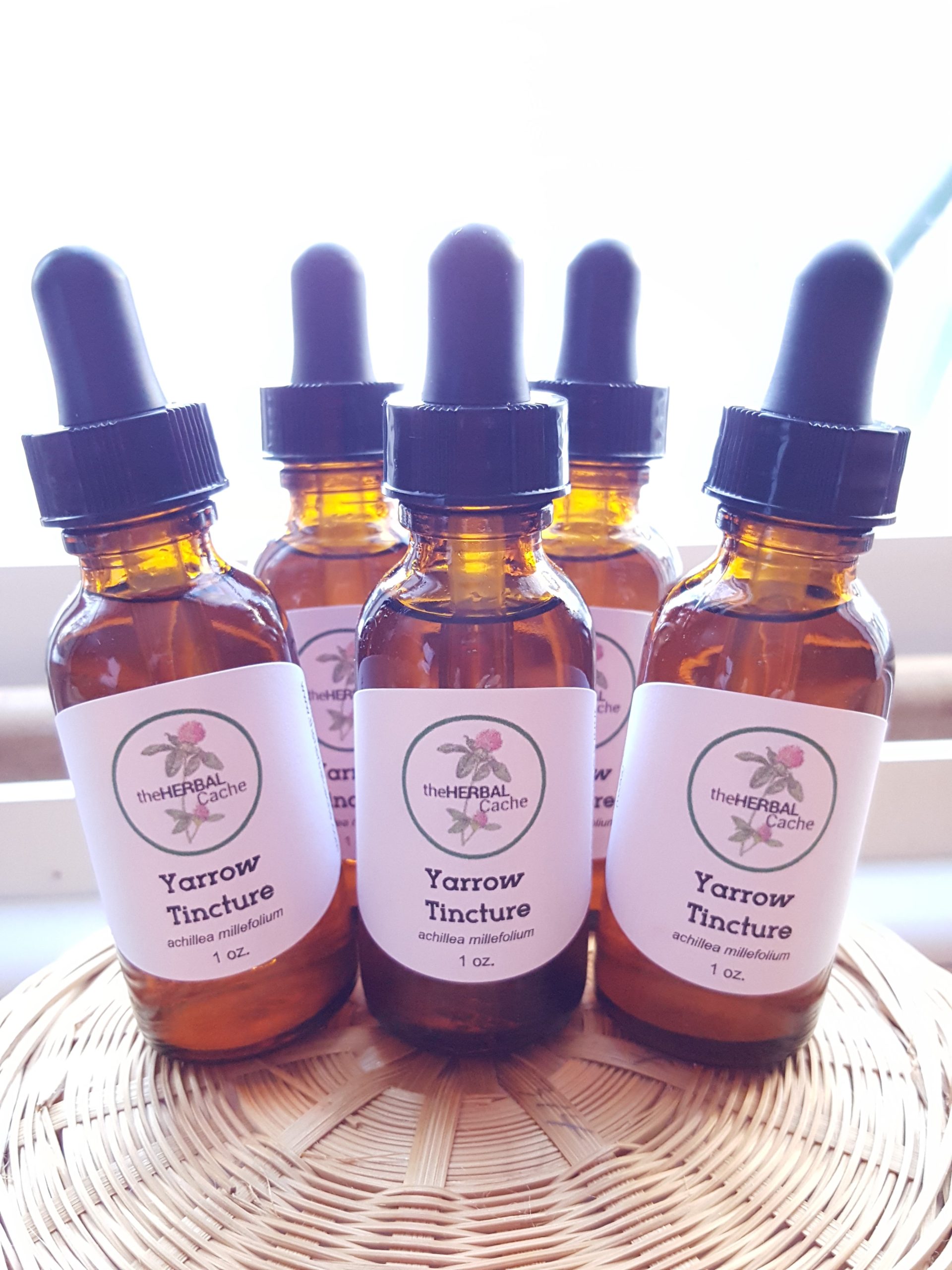
Gardening is such a relaxing and fun activity, and the whole family can join in. The best thing about gardening is that you get to reap the food benefits at the end!
If you’re interested in having a medicinal garden that is low-maintenance, there are certain things you should keep in mind to make it succeed. This includes when to plant, what plants to choose and where to put them. So be prepared to do a little research for your area.
Also, with all the chaos going on in today’s world, now is the perfect time to grow your own and not have to rely on others. Especially with the prediction of shortages looming over our heads.
Medicinal gardens provide many benefits. Not only do they look beautiful, but they can also be used to create natural remedies and food.
And don’t worry about space. Even if all you have is a balcony or small patio, you can utilize pots to grow your herbs in.
Don’t take on too much at the beginning. If you are new to gardening, maybe start with 1-4 plants and see how you do, and how the plants do. The last thing you want to do id overwork yourself and get frustrated and quit.
If you’re interested in starting your own medicinal garden, keep on reading for everything you need to know.
“The kiss of the sun for pardon,
The song of the birds for mirth
One is nearer God’s Heart in a garden
Than anywhere else on Earth.”
Many people enjoy planting medicinal herbs and other medicinal plants. The benefits of these plants have been known for centuries, and they continue to be used by many cultures around the world.
While the exact time to start planting will vary depending on the plant and the climate, there are a few general guidelines that can be followed. For most medicinal plants, it is best to start planting in early spring. This gives the plant time to become established before the hot summer months. However, some plants, such as lavender, do better if they are planted in late summer or early fall.
Think about how you want to start out. Do you want to try growing your herbs from seed or buy seedlings? Some herbs are very hard to start with seeds, so research before buying.
Many herbs are perennials, meaning they will come up every year, so once you get them started, you won’t have to replant them. One less thing to do next year!
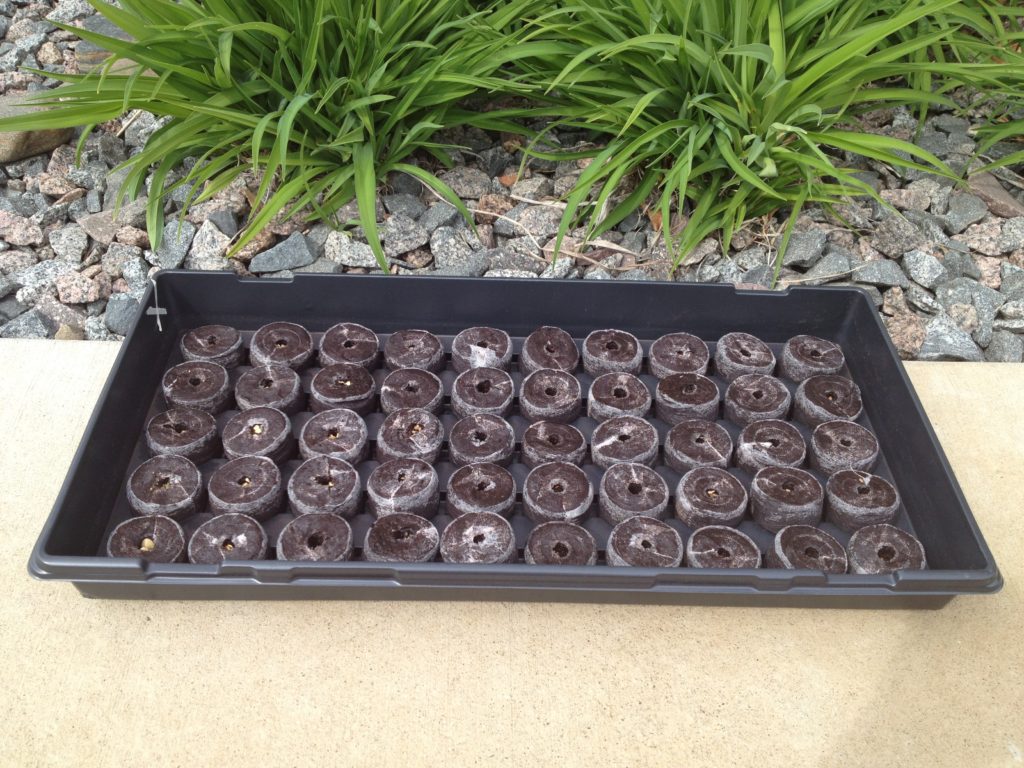
When it comes to medicinal plants, there are a variety of different options to choose from.
Some popular choices include herbs such as basil, rosemary, and mint. These herbs can be used to add flavor to food or brew tea. Other medicinal plants include echinacea, which is used to boost the immune system, and ginkgo biloba, which is often taken as a supplement to improve cognitive function.
Determine what and how you plan to use the herbs. Do you want to just use them in cooking? Than look into planting culinary herbs, such as thyme and sage. If you plan on using them for strictly medicinal purposes, what medicinal issues? If you have skin issues, you may want to plant calendula, which is wonderful for healing wounds, rashes, burns, and dry skin.
No matter what medicinal plants you choose to grow, it is important to research how to care for them properly. Make sure you know how much sun, water and space they will need, as well as any other special requirements.
With a little bit of care, your medicinal garden will grow and produce healthy plants.
Excited about the idea of growing your own medicinal plants and herbs, but not sure where to start? If you’re looking for a spot that is low maintenance and will allow your plants to thrive, here are a few ideas to get you started.
One option is to create a medicinal garden in containers. This can be an easy way to get started, and it gives you the flexibility to move your plants around if necessary. Make sure to choose containers that are large enough for the roots of your plants, and place them in an area that gets plenty of sunlight. You’ll also want to be sure to water your plants regularly, as they can dry out quickly in containers.
Another option is to plant your medicinal garden directly in the ground. If you choose this option, make sure to pick an area of your yard that gets plenty of sunlight and has well-draining soil. To prepare the soil, mix in some compost or other organic matter to help the plants thrive. Once you’ve chosen a spot and prepared the soil, you can start planting your medicinal garden.
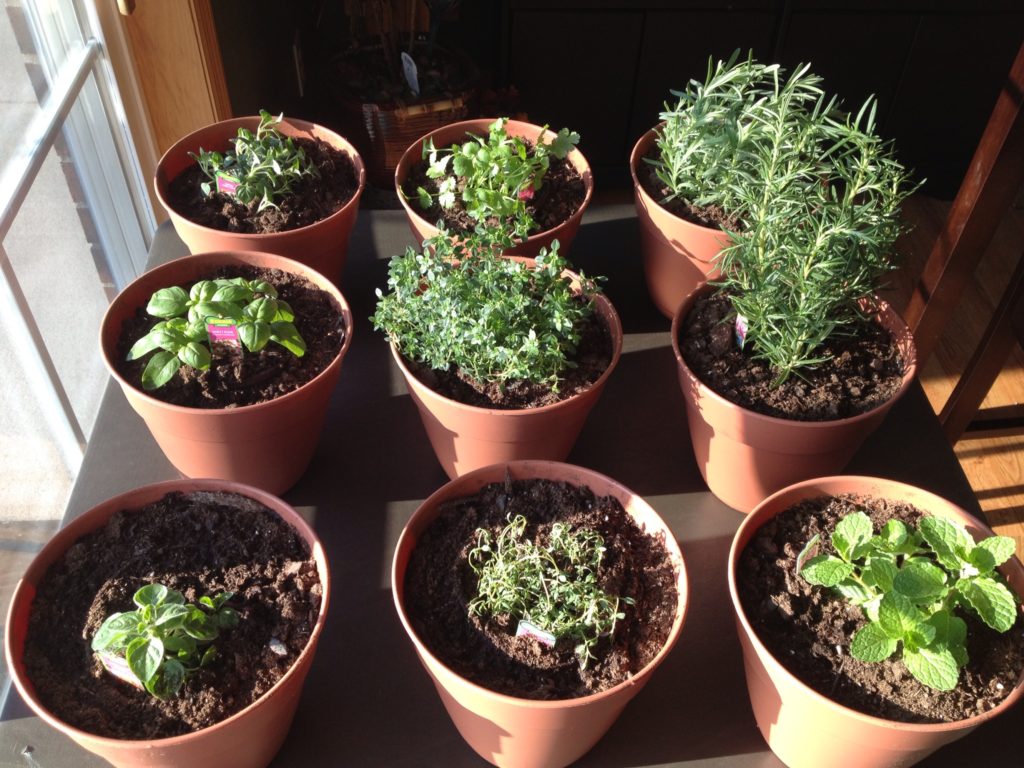
When it comes to medicinal plants and herbs, there are a few things you can do to ensure they thrive in their environment.
First, make sure they have plenty of sunlight. Most medicinal plants and herbs need at least 6-8 hours of direct sunlight each day. Secondly, water them regularly. Allow the soil to dry out slightly between watering, but don’t let the plants get too dehydrated. Third, make sure they’re in a location with good air circulation. Avoid placing them in overly humid or damp areas, as this can lead to fungal growth. Finally, don’t forget to fertilize your plants every few weeks. This will help them to continue growing strong and healthy.
Don’t get upset if a herb or two die on you. Depending on the time of year, you can always plant it again. I love a quote by the Farmstead Lady: “Well, that’s why God invented next year”! Don’t give up on the first try.
If you stay on top of it, you can help your medicinal plants and herbs stay healthy and thrive.
While many medicinal plants are herbs, there are also medicinal flowers and trees.
If you’re looking to add more medicinal plants to your garden, there are a few things to consider. First, what do you want to use the medicinal plants for? There are many different types of medicinal plants, each with their own unique properties. Do some research to find out which plants would be best suited for your needs. Second, consider which plants would be low maintenance. Some medicinal plants can be quite finicky, so it’s important to choose ones that will be easy to care for. Finally, think about how you can add variety to your garden. Maybe you could add some herbs or flowers that can also be used medicinally.
If you’re interested in adding more variety to your medicinal garden, consider some of the following low-maintenance options.
One easy-to-grow medicinal plant is lavender. Lavender has a long history of use as a medicinal herb, and it can be used fresh or dried. Lavender is most commonly used to ease anxiety and promote relaxation, but it can also be helpful for headaches, insomnia, and stomach upset.
Chamomile is another easy-to-grow medicinal plant. Chamomile tea is well-known for its ability to soothe nerves and promote sleep. Chamomile can also be used as a topical treatment for skin conditions like eczema and psoriasis.
Rosemary is a versatile medicinal herb that can be used in cooking or taken as a supplement. Rosemary is thought to improve memory and concentration, and it has also been traditionally used to treat stomach upset and headaches.
Mint is a refreshing medicinal plant that can be used in teas, salads, or as a garnish. Mint is known for its ability to soothe an upset stomach, but it can also be helpful for respiratory problems and headaches. One thing to keep in mind with any member of the mint family, is that they will take over ground space. If this is an issue, consider planting mint in a pot.
Spiraea Herbs has a wonderful video showing some perennial herbs that you can add to your garden.
These are just a few of the many medicinal plants and herbs that you can grow in your garden. By adding a few of these low-maintenance options, you can create a medicinal garden that is both beautiful and functional.
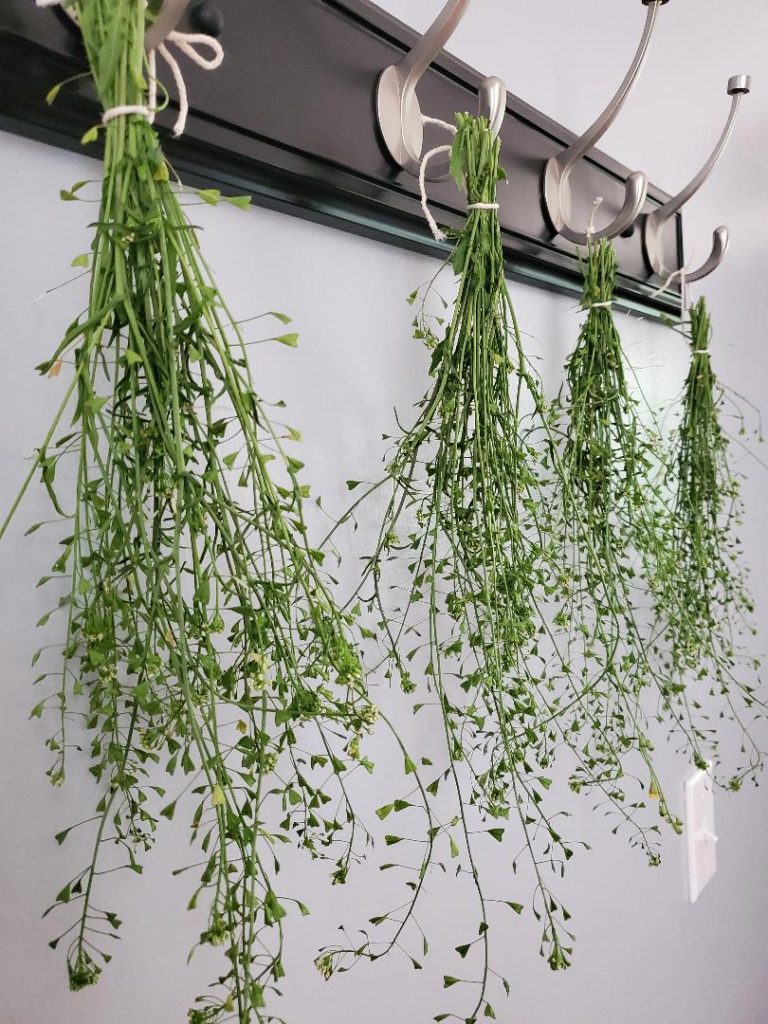
When it comes to medicinal plants, it’s important to know when to harvest them and how to store them properly. Otherwise, they may lose their potency or go bad before you have a chance to use them. Here are a few tips to help you get the most out of your medicinal plants:
With these tips, you can ensure that your medicinal plants are fresh and potent when you need them.
I hope this has inspired you to either start or add medicinal herbs to your garden.
There are many different types of medicinal plants, each with their own unique properties. Do some research to find out which plants would be best suited for your needs.
Second, consider which plants would be low maintenance and survive in your neck of the woods. Some medicinal plants can be quite finicky, so it’s important to choose ones that will be easy to care for. A plant that is easy to grow in California, may need a lot of attention in Minnesota.
Finally, take some time to learn about harvesting and storing medicinal plants. By following these tips, you can create a medicinal garden that is both beautiful and functional.
What medicinal herb are you going to plant?
Garden Lover
Here is a fun video to help get you in the mood!
Elderberries have been all the craze for some time. People make syrup, jam, tea and more with these berries.
What I found out in researching elderberries, was that these berries are very special. They are like the secret remedy for colds and the flu!
There are a few types of elderberry plants, but the black elderberry, Sambucus canadensis, is favored. Because of its strong anti-viral properties, it a huge defender against colds and the flu. Thus the reason for being so popular in the fall.
Sadness and death can creep up at anytime. I don’t think one can ever be fully prepared for either.
I know I wasn’t.
My father passed away rather quickly just a few weeks ago. I’m still trying to wrap my head around it and keep asking myself, “Why?”
I also can’t help but wonder if I shouldn’t have done more, taken action, asked more questions, pushed harder, spoken up, made inquiries, etc. Why didn’t I?
These are questions that plague me everyday. I try to convince myself that it was his time. But was it?
The grief that overwhelms me is constant and heavy. Day in and day out, I ponder and wonder how I’ll be able to go on.
So I bring back happy memories. Those days filled with good things, like birthdays and weddings.

“When a cardinal appears in your yard, it is a visitor from heaven”
Everyone needs different forms of comfort and support when grieving. For me, it’s litttle things that don’t otherwise seem to matter.
Take the red cardinal for instance. A few days after my Dad’s passing, a bright red cardinal came and landed in the snow right outside my patio door. How it stood out in the snow!
I hadn’t seen a cardinal in the backyard for quite some time, so was pleasantly surprised.
A couple days later when I returned to work, a co-worker gave me the red cardinal, saying she had received one the year before when her father passed away. What a coincidence!
The appearance of a red cardinal has the spiritual meaning of a lost one who is thinking about you and sending you a message. That brought some comfort to me.
Deep rooted emotions of grief can be hard to cope with for everyone. Grief can affect people emotionally, physically, and spiritually. Grief also has the ability to affect you physically as well as mentally.
In these cases, we may need something more then just comfort to help us move through our grief. I needed something to help me fall asleep so I wasn’t constantly questioning my actions, or rather, lack of action before my Dad passed away.
So I turned to my plant allies.
Herbs have been around since the beginning of time. They have been used for many different things from illness to helping cope with situations such as loss, sadness and death.
Lets take a look at some herbs that have been used, and still used today as ways to help with dealing with grief and death.
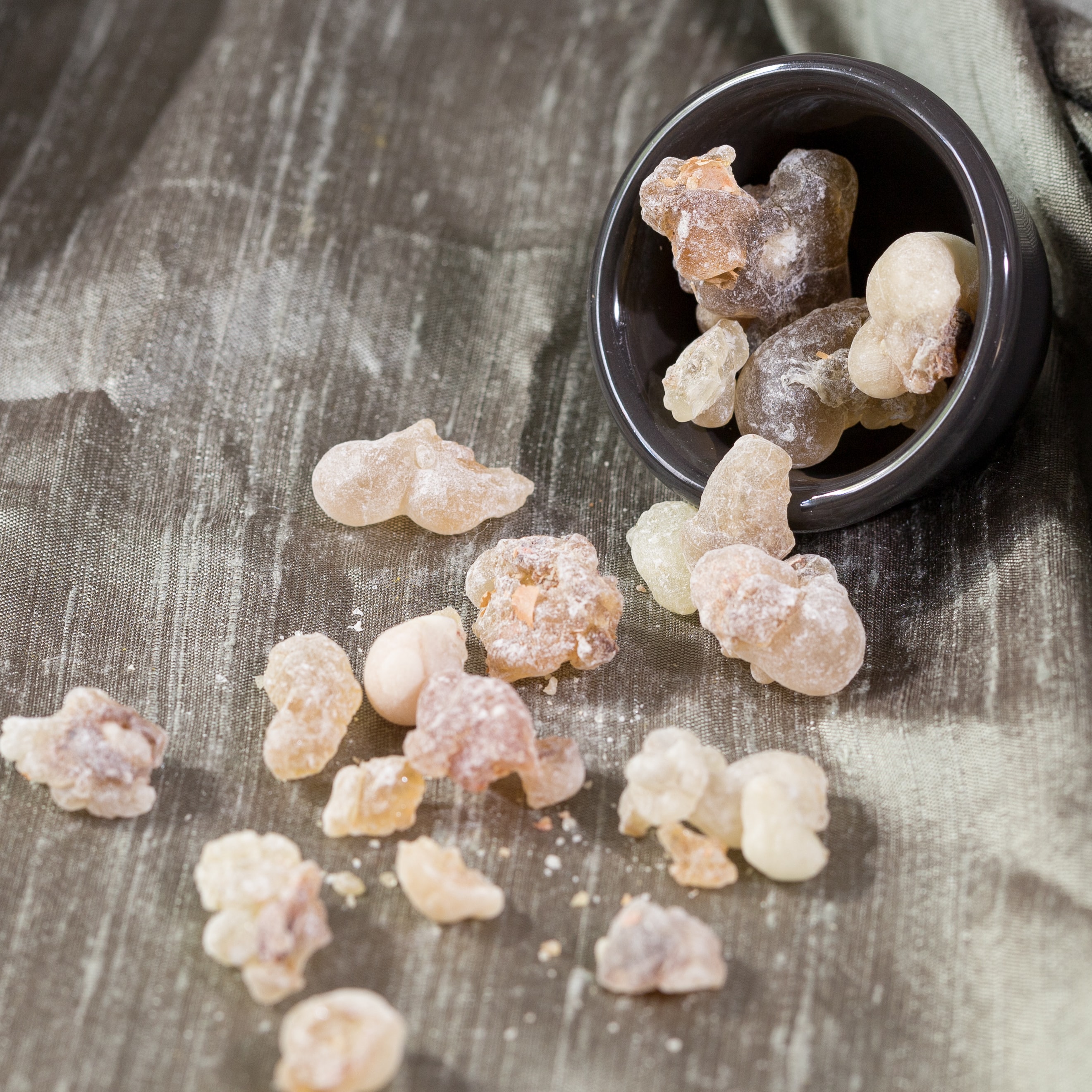
The first herb/plant that came to me when thinking about grief and death, was frankincense. And for good reason.
Frankincense was one of the gifts from the Three Wise Men to the baby Jesus. It has been used for over 5000 years in religious ceremonies in a number of cultures and religions.
Frankincense is a resin that comes from the bark of the boswellia tree that is native to the Middle East and north Africa. It is extremly fragrant and has a sweet, citrusy aroma.
Spiritually, the smoke from the resin is said to call the angels and send prayers to heaven.
I feel at peace during that time of church, when the incense is burned. The aroma has a very calming effect for me.
We all know, or should know, the smell and taste of peppermint. It is all around us, from room sprays to candies.
Why? Because it is so uplifting.
Peppermint works to clear the mind and regain focus. It helps us to keep going in times of grief.
If you would like to take a little journey with the plant, here is a guided meditation with peppermint from herbalist Correne Omland, from Spiraea Herbs.
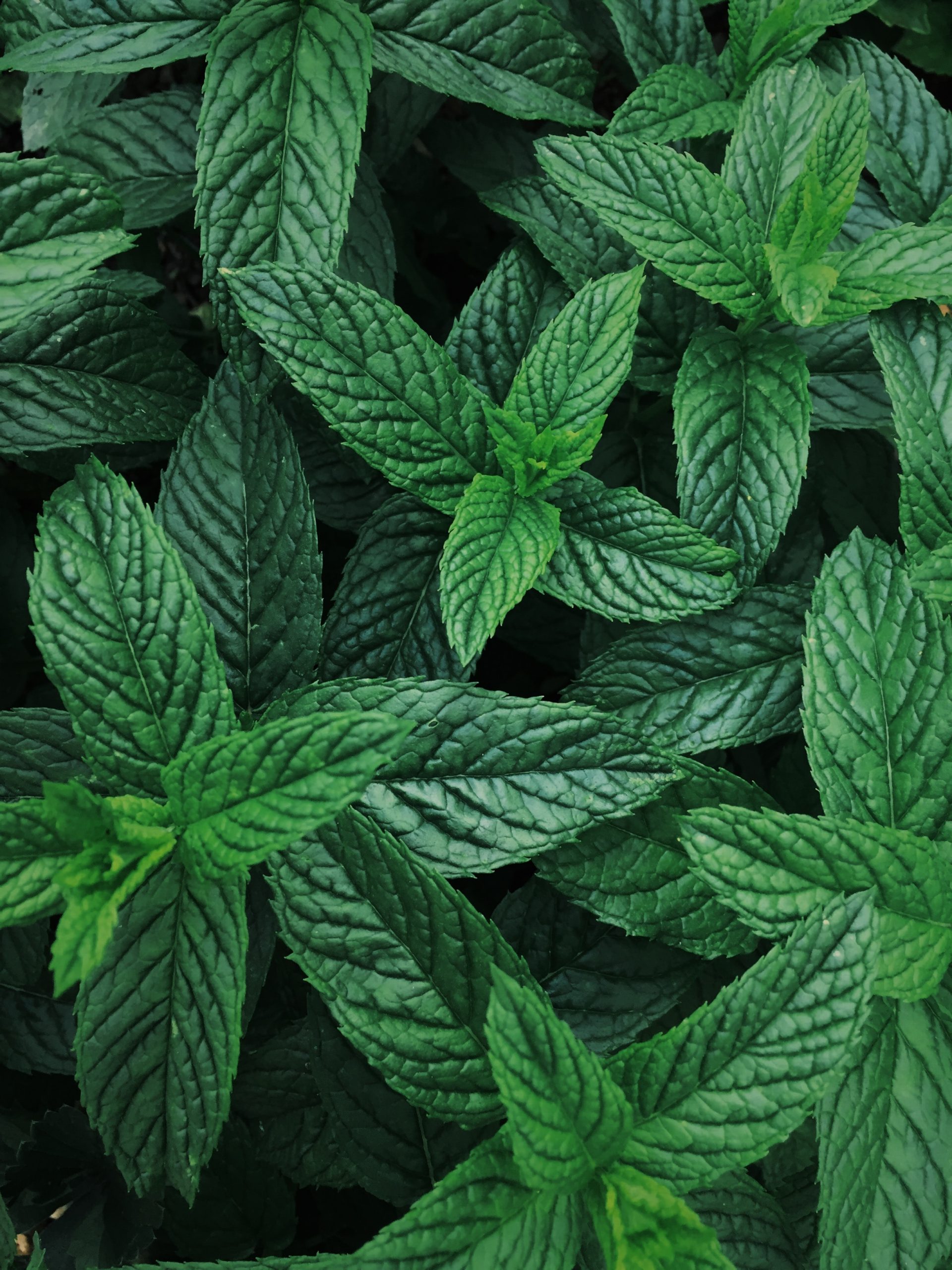
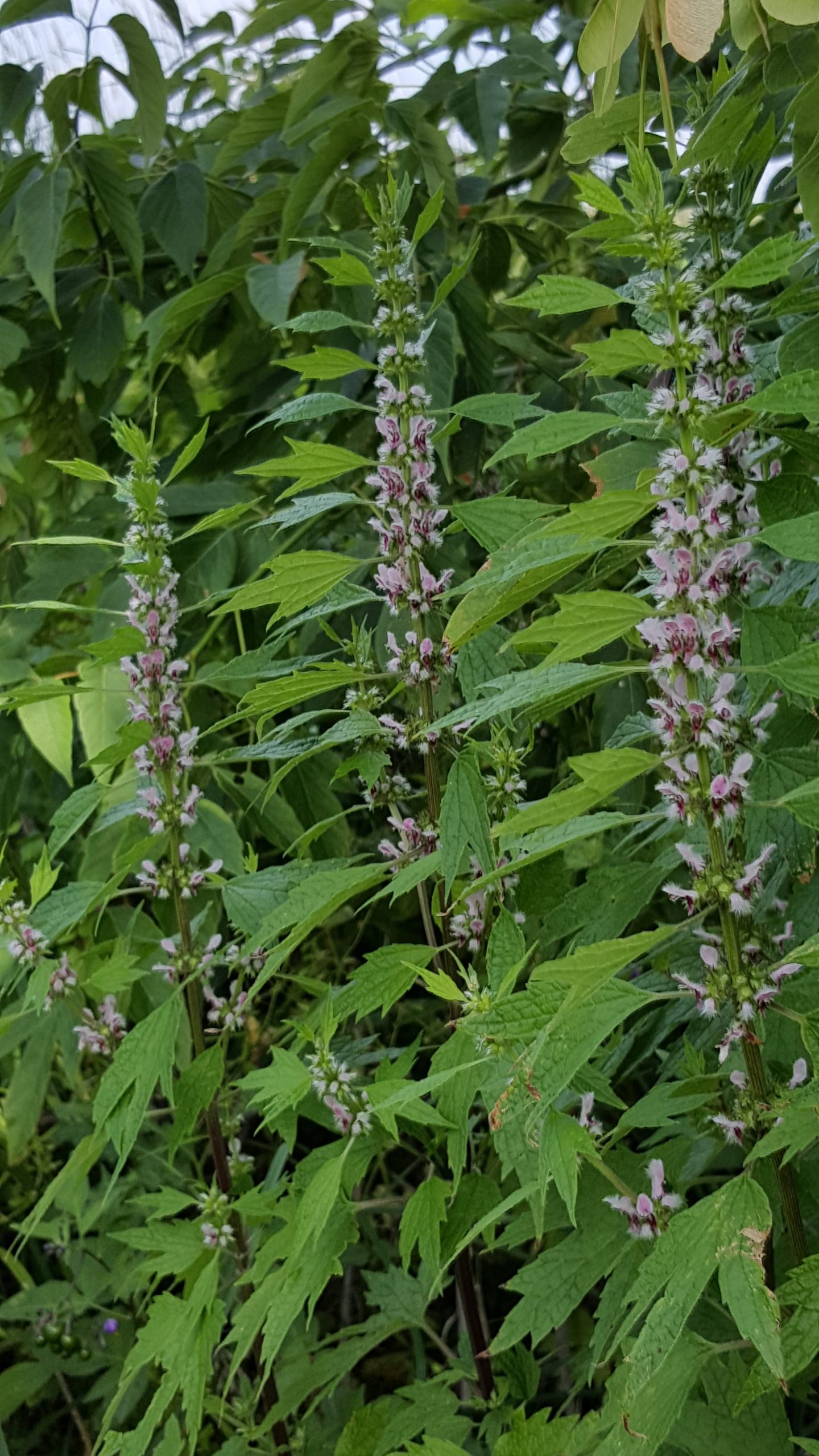
This herb is dear to my heart because it grows abundantly on my parent’s farm.
As it’s name suggests, Motherwort is there to comfort and protect. This is the plant you want to go to when you just can’t do it anymore.
It’s latin name, Leonurus cardiaca, means “lion hearted”. Strong and heart centered is what this plant offers.
Motherwort is a member of the Mint family, just like peppermint. It doesn’t have the pleasant aroma like the other mints, but it is strong and robust, and will grow almost anywhere, like most mints.
If you would like to learn more about how Motherwort can help you, check out my blog post, “Motherwort – It’s Uses & Benefits“.
The rose is probably the most highly recognized plant for uplifting one’s spirit.
It has always been a symbol of love and forgiveness.
I like how a blog post from the Herbal Academy describes the thorns: “The thorns are not to wall you off from the outside world, but instead, they express the complexity, beauty, and darkness that accompanies grief.”
The rose has the capacity to help us see the love, comfort, compassion and kindness in the world around us.
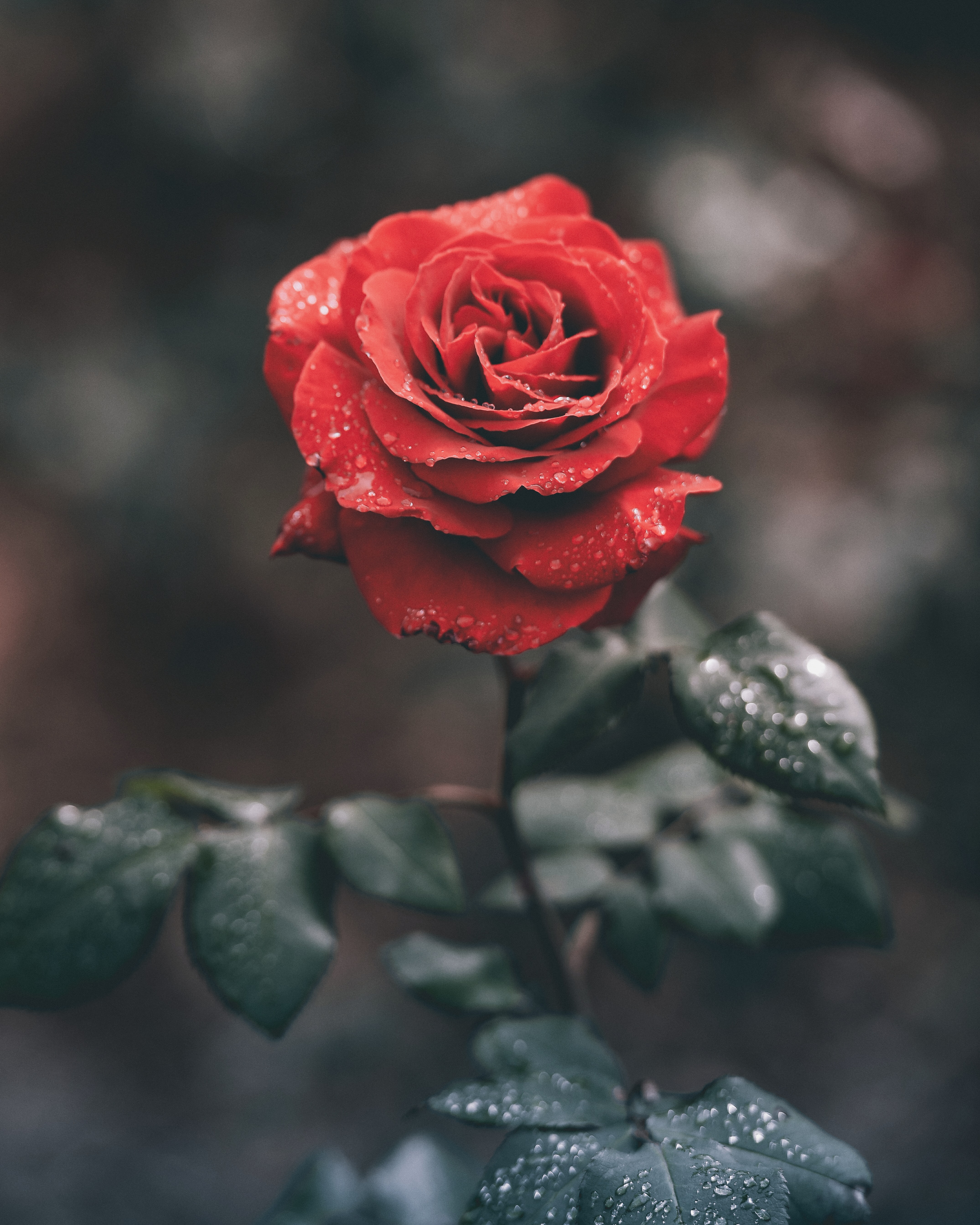
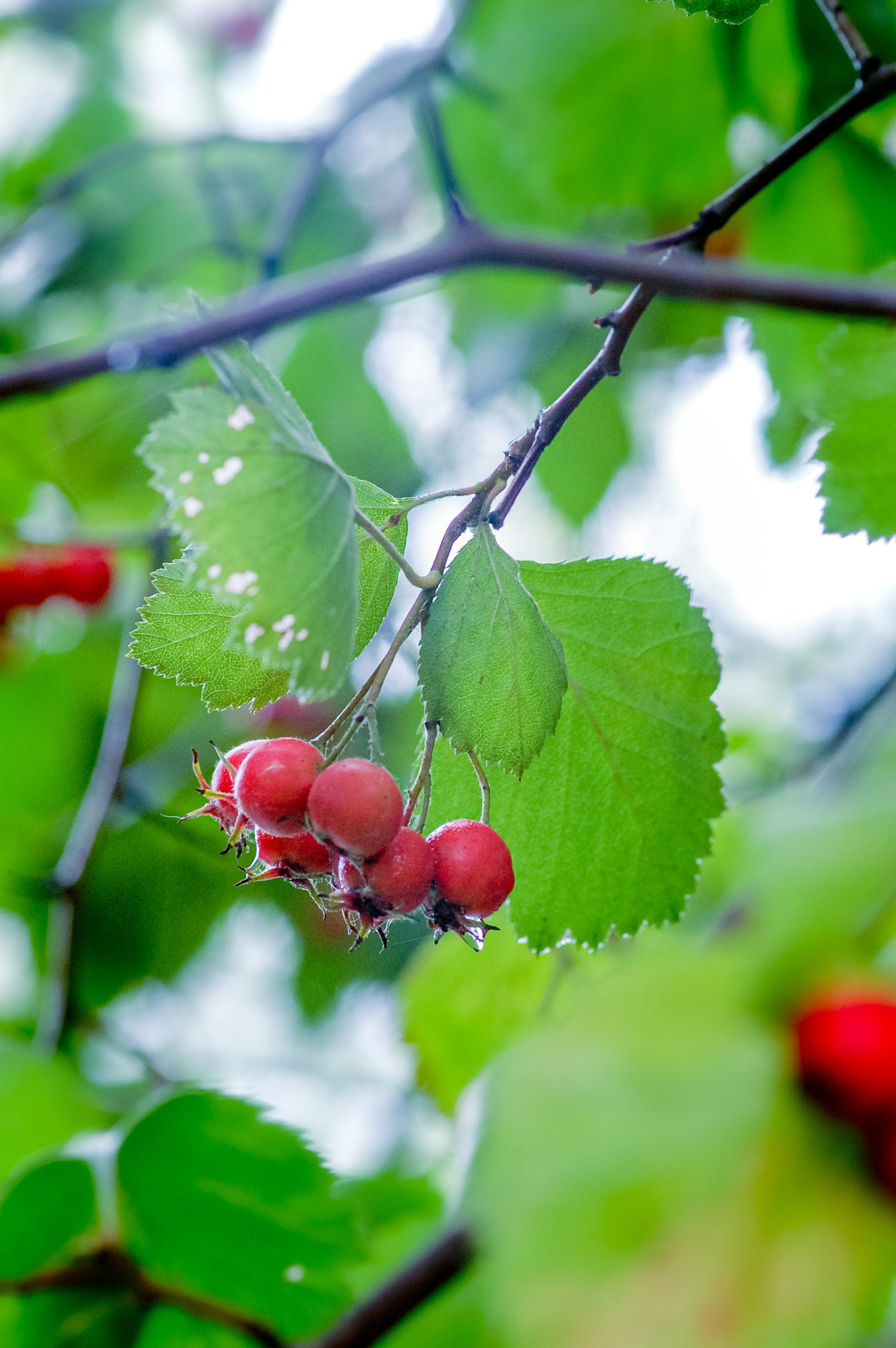
Hawthorn is the classic heart tonic remedy in Western Herbalism.
It’s red berries are best known for helping the heart.
It is also known as a mild sedative and can help calm one’s nerves.
Hawthorn encourages one to find hope, love and longevity in the journey forward.
When our spirit becomes weak and frail, hawthorn will help in restoring strength once again.
Hawthorn can bring back the confidence and help one to not live in fear of death.
Here is a short podcast with more info on hawthorn from HerbRally.
There are many other herbs and plants that can help with grief as well. The list is rather endless, as all plants support us in so many ways.
Here is a list for you to reference:
Grief enters our lives in so many ways. It can come as a loss of a loved one, loss of a job, health issues, arguments, etc.
The important thing to learn from grief, is how to handle it in a healthy way. Know what your limits are and how much you can handle.
Never be afraid to ask for help, or ask someone to just listen to what you have to say.
Taking a walk in nature or meditating can also help take away some of the sadness you may be feeling.
Just know that grief is a part of life and bonds us closer together.
https://herbandroot.com/blogs/collections/frankincense-myrrh-more-valuable-than-gold
http://www.flowerfolkherbs.com/articles1/frankincense-a-sacred-resin
https://www.happiness.com/magazine/health-body/essential-oils-for-grief/
http://northforestfarms.com/2021/10/07/good-grief/
https://www.evolutionaryherbalism.com/2018/07/13/herbs-for-grief/
The world is a nettle; disturb it, it stings. Grasp it firmly, it stings not.
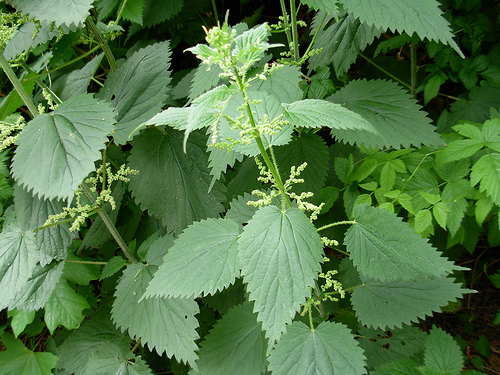
Stinging nettle has been used for centuries to treat various maladies, including anemia, arthritis and skin diseases. Its leaves are edible in salads or cooked like spinach.
And yet many people see it as a weed and want to pull it up by its roots to eradicate it.
But the benefits of stinging nettle include supporting urination, increasing blood flow and reducing neural inflammation.
Let me show you that this plant is more than just a weed.
Stinging nettle is generally considered a weed and can be found growing wild in woodlands and on river banks. It also prefers disturbed soils, such as on farmsteads, manure piles or near abandoned buildings.
Stinging nettles have long fleshy roots that can grow deep into the ground. This is important, because this is how the plant becomes so nutritious, by pulling up vitamins and minerals deep in the soil.
The leaves, stems and roots are covered in tiny hairs that release histamine and other chemicals that can sting painfully. These chemicals cause an itchy, irritating sensation on the skin which only lasts about 15 minutes.
Growing up, my mother called this plant “itch weed”, because it made you itch. So I highly recommended that you wear gloves when handling this plant. Or if you want to get the true feeling of stinging nettle, don’t.
This plant is a very fast grower and spreads easily by seed or underground shoots.
For optimal nutrition and medicinal properties, it should be picked before flowers appear. I like to harvest the tops in early spring when the plants are still young. They will grow back, so you can get a number of pickings.
Susun Weed says to grasp it by a top leaf and cut just the very top (no more than 8 leaves) and put that in the foraging basket. Since nettles are so fibrous, she says to only pick the very tops. If the scissors have difficulty cutting, it’s too far down.
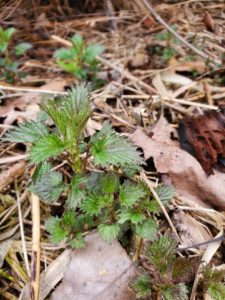
The leaves and young shoots of stinging nettle are edible. They have a slightly bitter, nutty flavor that most find pleasant. Nettle leaves can be a simple substitute for spinach in any dish.
Nettles are rich in vitamins A, C, D and K as well as iron, potassium, calcium and manganese.
One serving of stinging nettle provides almost all of the recommended daily allowance for vitamin K per day.
Nettles are also rich in chlorophyll, which gives them their green color and may be responsible for some of its health benefits.
Two studies published in the “Journal of Agricultural and Food Chemistry” evaluated the antioxidant activity of nettle extract and found it to be higher than other popular drinks like cranberry juice, grape juice and green tea. The researchers concluded that the high antioxidant activity may be due to nettle’s chlorophyll content.
The leaves are said to have a beneficial effect on the urinary system because they contain high amounts of potassium, calcium and magnesium. They also can help reduce inflammation in the bladder lining which may prevent chronic infections from developing.
In addition to its nutritional value, some studies suggest that stinging nettle may also have medicinal properties.
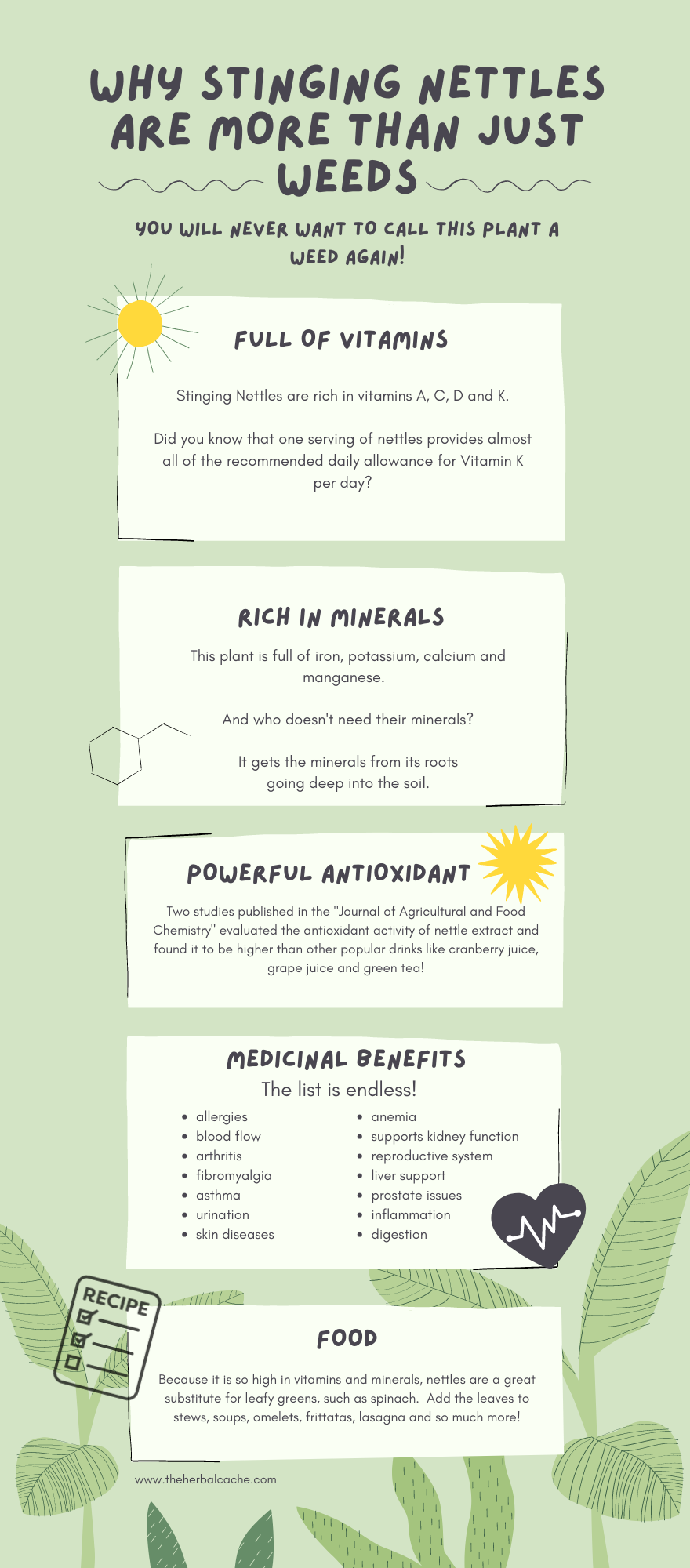
In addition to its nutritional content, stinging nettle is said to have medicinal properties. Its roots and leaves are used in traditional herbal remedies for conditions such as anemia, arthritis and skin diseases. In addition, modern uses include supporting urination and increasing blood flow. Nettle root may also help relieve symptoms of the common cold.
One small study published in the “Journal of Complementary and Alternative Medicine” found that patients who suffered from frequent colds showed a significant decrease in number of colds after taking nettle root extract daily for 12 weeks. These results were not found with the placebo group.
Another study conducted by researchers at the University of Virginia found that drinking stinging nettle tea reduced the total number of colds by more than one-third among patients who suffered from chronic respiratory infections.
Brigitte Mars talks about how people have used nettles for thousands of years to help with pain from arthritis, fibromyalgia and as an early substitute for Viagra! By gently brushing a stem of leaves over one’s skin, the irritation causes a huge blood flow to the area (called irtication). Thus helping with pain, inflammation, etc.
Nettle is a wonderful herb for those with allergies. A study published in “Alternative Therapies in Health and Medicine” suggested that an extract from this plant may reduce inflammatory responses due to allergies, which suggests it may be effective in relieving symptoms of allergies and asthma.
Herbalist Matthew Wood says the seeds in particular, may help get rid of allergies, both food allergies and seasonal ones. He also recommends the root be taken for prostate problems.
Stinging nettle also helps get rid of mucus in the lungs.
David Hoffman calls this plant the “ultimate green tonic”. That should tell you something.
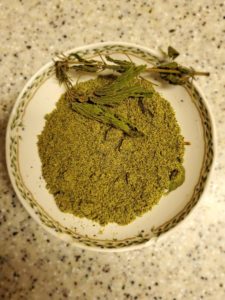
There are a number of ways you can incorporate stinging nettle into your diet.
A very easy way is to cook it like spinach or added to soups and stews for extra nutritional benefit. Herbalist Rosemary Gladstar likes to saute it with a little olive oil, lemon juice and feta cheese.
Herbal Revolution preserves their nettles like this to to enjoy all year:
These little “patties” can be added to soup, pesto, sautéed, in frittata, scrambled eggs, smoothies, etc. This could also be done with dandelion greens!
The young shoots may also be eaten fresh or steamed. But make sure to get the tops of young plants. Nettles are very fibrous in older plants and growth near the ground.
To make stinging nettle tea, steep one teaspoon of dried herb for eight to 10 minutes in hot water. This makes an excellent substitute for coffee that is high in antioxidants and many other nutrients.
People who suffer from chronic conditions like allergies and arthritis may find relief by drinking stinging nettle tea.
Taking nettle in a tincture form is available if you can’t stomach eating the greens, or don’t like drinking teas. As a tincture, it is a more concentrated and you can take it as needed. You can find tinctures in most natural food or wellness stores.
Making a herbal decoction with nettles is another great way to take this plant. Just follow these simple instructions:
My favorite way to use nettles is by making Nettle Gomasio! This herbal spice blend can be used on almost everything. I personally like it on my fried eggs and popcorn.
In the video below, I show you just how easy it is to make your own Nettle Gomasio!
I hope I have shown you just how beneficial stinging nettles are for us.
Not only are they nutritious in terms of the vitamins and minerals they provide, but they also help support our health and body in a number of ways.
Nettles have been around for thousands of years, and I hope they will be around for a thousand more. Because we need them.
So go and “nettle” up!

“An anthology is like all the plums and orange peel picked out a cake.” Walter Raleigh
Eat orange peels?
Now most of us will drink orange juice or eat the inside slices of an orange. But the peel? Too bitter!
But before tossing that orange peel into the garbage, continue reading and be amazed!
The peel has so much to offer us in terms of medicinal properties and keeping us healthy. It has been used for thousands of years to treat different ailments.
Orange peel contains a large amount of Vitamin C and is a powerful antioxidant.
So lets learn a bit about how orange peel is good for us, make a cup of orange peel coffee, look at ways to get orange peel into your diet, and lastly, check out other ways to use up those orange peels.
In Need of Organic Orange Peels?
You can save the peels from organic oranges you purchased and dry them yourself. Easy peasy.
Or you can purchase them from Mountain Rose Herbs, who stand for organics, fair trade, sustainability and more.
Orange peel, along with other citrus fruits, have been used for thousands of years as medicine.
It contains flavanoids, Vitamins A, C, B5 and B6, calcium, riboflavin, thiamine, niacin, folate and dietary fiber.
Lets look at the 21 ways orange peel has been used over the years to help with overall health and how you can benefit.
1. Diarrhea
2. Indigestion
3. Constipation
4. Cleansing
In Traditional Chinese Medicine (TCM), the orange peel has been used for hundreds of years to help with gas, bloating and other digestive issues.
The orange peel contains pectin, which is a beneficial carbohydrate that the good bacteria in your gut feed off of.
5. Colds
6. Coughs
Because of its antibacterial, antifungal and antiviral properties, orange peel is a great for warding off cough and colds. It helps in getting excess phlegm out of the lungs.
7. Weight Loss
8. Obesity
9. Athletic Performance
A team of scientists in Taiwan researced the effects of four different orange peel varities, and found that they remarkably reduced the production and accumulation of triglycerides in fat cells.
10. Cholesterol
When taking in large amounts of orange and orange peel, the HDL increases, while the LDL decreases, which is great for those with high cholesterol.
11. High Blood Pressure
The potassium in orange peel plays a huge role in lowering the risk of high blood pressure.
12. Anxiety
13. Stress
14. Hypertension
15. Depression
Studies are now showing that by just inhaling the aroma of orange and orange peel, can have an uplifting effect on people.
16. Arthritis
17. Rheumatism
Orange peel contains powerful anti-inflammatory agents that help with swelling, redness and inflammation.
18. Asthma
19. Oral Health
20. Hangovers
21. Poor Circulation
So how can you get more orange peel into your diet? Let’s start with a cup of Orange Peel Coffee and then look at more ways to use those peels.
This coffee recipe is not only easy to make, but so good to drink!
Coffee has always been associated with caffeine and a morning pick-me-up. This cup of freshness is much more.
Smelling the citrus aroma while the orange peel is steeping in the hot coffee is just up-lifting.
Are you ready for some?
Here is the recipe for Orange Peel Coffee. I’ve taken it from HERE and adapted it to my tastings. That’s what makes this recipe so wonderful! You can adjust it to your likings.
Orange Peel Coffee
Ingredients:
Directions:
Enjoy my fun little video below on making Orange Peel Coffee!
Besides eating orange peel, there are a number of other uses for orange peel, so don’t throw it out! Unless it’s into the compost pile.
Here is a list of uses:
https://www.motherearthliving.com/cooking-methods/citrus-peel-medicine-coffee
https://www.webmd.com/vitamins/ai/ingredientmono-908/sweet-orange
https://www.motherearthliving.com/health-and-wellness/citrus-peel-medicine
https://www.linkedin.com/pulse/25-proven-health-benefits-orange-peel-tea-dr-paul-haider/
Yarrow is one of the world’s oldest medicinal plants and has been used for centuries. It was found among other medicinal herbs in a Neanderthal burial site in Iraq, which dates from around 60,000 BC.
Throughout history, it has been used for treating wounds, hence its common names “soldiers’ woundwort” and “staunchweed”.
Achillea millefollum
The genus, Achillea, was named after the Greek hero, Achilles, who used plant extracts to treat soldiers’ wounds in the battle of Troy. Millefolium means “a thousand leaves”.
The most common and well known use for yarrow is healing wounds. It also helps to control the bleeding of lacerations, puncture wounds, and abrasions.
Because of yarrow’s anti-inflammatory and antiseptic oils, astringent tannins and resins, it possesses excellent wound healing qualities. It also contains silica, which will help in repairing damaged tissue.
Achillea millefollum has antibacterial and antimicrobial so it will help in preventing any infection from setting in.
Make yarrow a staple in your first-aid kit. You never know when it will come in handy.
Yarrow is considered a bitter, which makes it a great partner for digestion. This in turn helps the body absorb more nutrients. It also helps with poor appetite due to low digestive secretions and general inflammation that makes tissues not function well. It has a slight affinity for the gallbladder and liver.
This plant can also help if you get food poisoning, by getting the toxins out of your system.
Yarrow has been used throughout history in relation to blood. It both activates blood platelets and breaks up coagulated blood. By thinning the blood, it moves congestion in the portal vein, the pancreas and the lungs.
It also stimulates the bone marrow and increases white blood cell production.
Achillea millefollum may also lower blood pressure by moving blood to the skin and easing the burden on the heart.
Yarrow is an astringent, and because of that, it is wonderful for varicose and spider veins. It astringent properties help tighten and tone the walls of the veins. This is the key ingredient in my ever popular varicose vein cream. Check out my blog post on varicose veins to learn more.
Place some crushed leaves up against the aching tooth and it will help relieve the pain.
Yarrow is used to protect the skin from excessive sun or wind. It can also help to clear up skin acne.
The astringent properties make it a go-to herb when one is hit with diarrhea.
Because it is a diuretic, yarrow promotes urine production and flow, which helps let out excessive fluids and toxins through enhanced urination.
The diaphoretic actions of yarrow can help move toxins out of the body through sweating, which helps the body to break fevers. By relaxing the skin, it will open the pores to allow copious sweating and the release of toxins.
Yarrow fights infection, helps with nausea, stimulates sweating, and lowers fever. Through thinning the blood and increasing circulation, it also helps congested people breath better. A classic cold and flu remedy is a combination of yarrow, peppermint and elderflower drunk hot.
Yarrow has been used successfully to treat asthma attacks through thinning the blood and increasing blood flow in the lungs.
If you ever get a nosebleed, all you have to do is pick a few fresh leaves and rub them between your hands to bruise them, releasing the aromatic oil. Roll the leaves into a nasal plug, insert into the affected nostril and leave until the bleeding completely stops before gently removing the plug.
But beware – yarrow can also cause nosebleeds as well. It is one of those plants that can cause what it cures. Hence, one of its nicknames is “nosebleed”.
Menstrual Cycle
Yarrow contains sterols, which have actions similar to hormones, and aid in balancing the menstrual cycle. So it is applicable in both extremely heavy or very scanty (and absent) menstruation. It may also be used externally as a sitz bath for painful cramping during menstruation.
In Sweden, they sometimes use yarrow in place of hops when brewing beer. It is said to be more intoxicating that way.
Yarrow has many uses in the garden. It’s small, delicate flowers are wonderful for bringing in bees and butterflies.
Yarrow is a great companion plant. It’s root secretions strengthen and protect nearby plants and help them become more disease resistant.
The roots of the yarrow plant bind loose soil together, thus helping prevent erosion.
Every garden should contain at least a clump of yarrow to help maintain a healthy ecosystem.
Many of the superstitions and incantations that involve Yarrow are focused on finding one’s partner. Many traditions suggest that the seeker, mainly young girls, would sew an ounce of Yarrow in a piece of their clothing or place it under their pillow before going to sleep.
“Good morrow, good morrow,
To thee, braw yarrow,
And thrice good morrow to thee;
I pray thee tell me today or tomorrow
Who is my true love to be.”
Yarrow is viewed by some as having a protective quality from “bad vibes” or that feeling of “everyone is against me”.
By using it as a flower essence or having the actual plant, it can help protect one from the negative outside influences one may have.
I wildcraft my yarrow in central Minnesota and make tinctures. They are available for purchase HERE.
https://wildfoodsandmedicines.com
All photos are the property of theHERBAL Cache, unless otherwise noted.